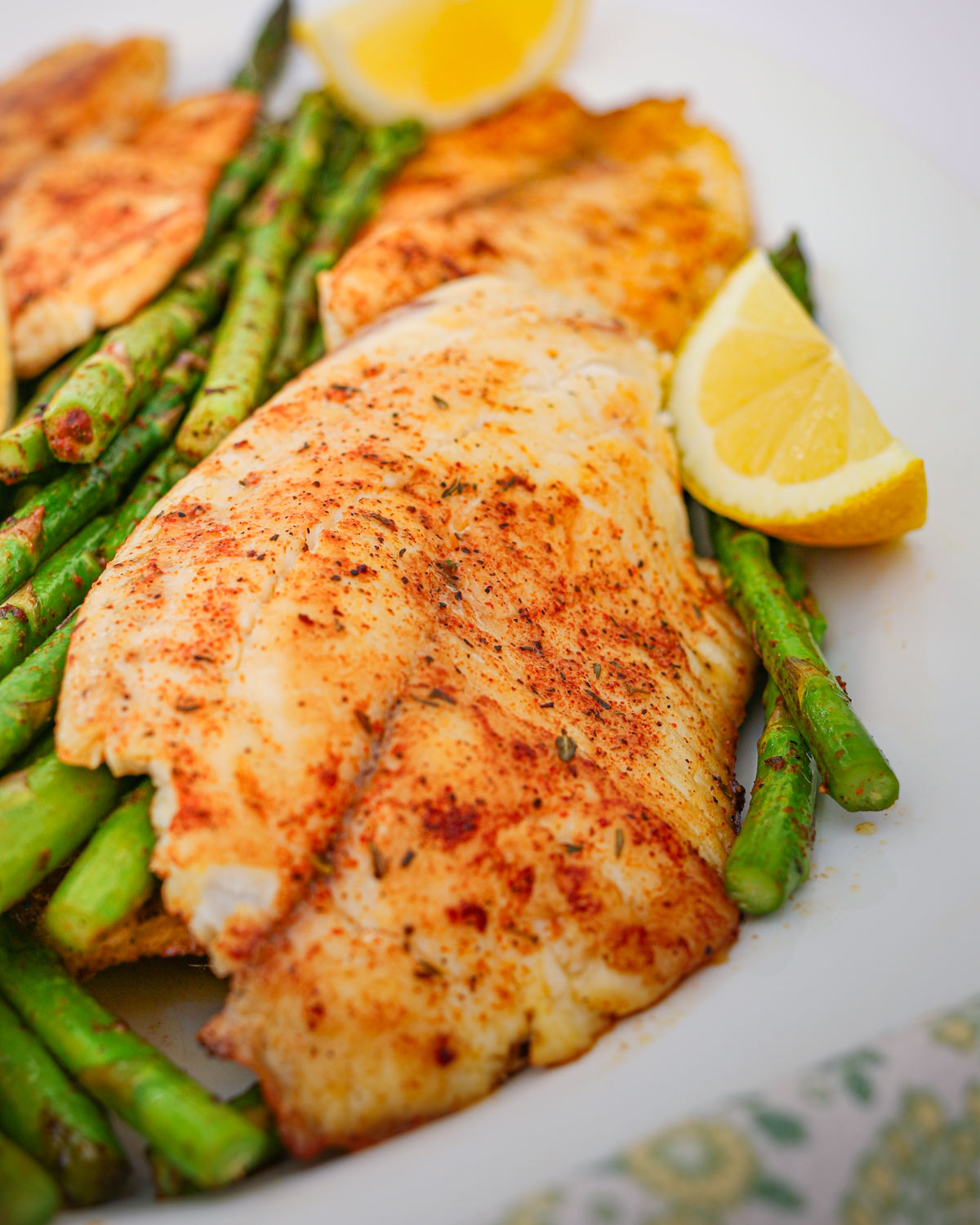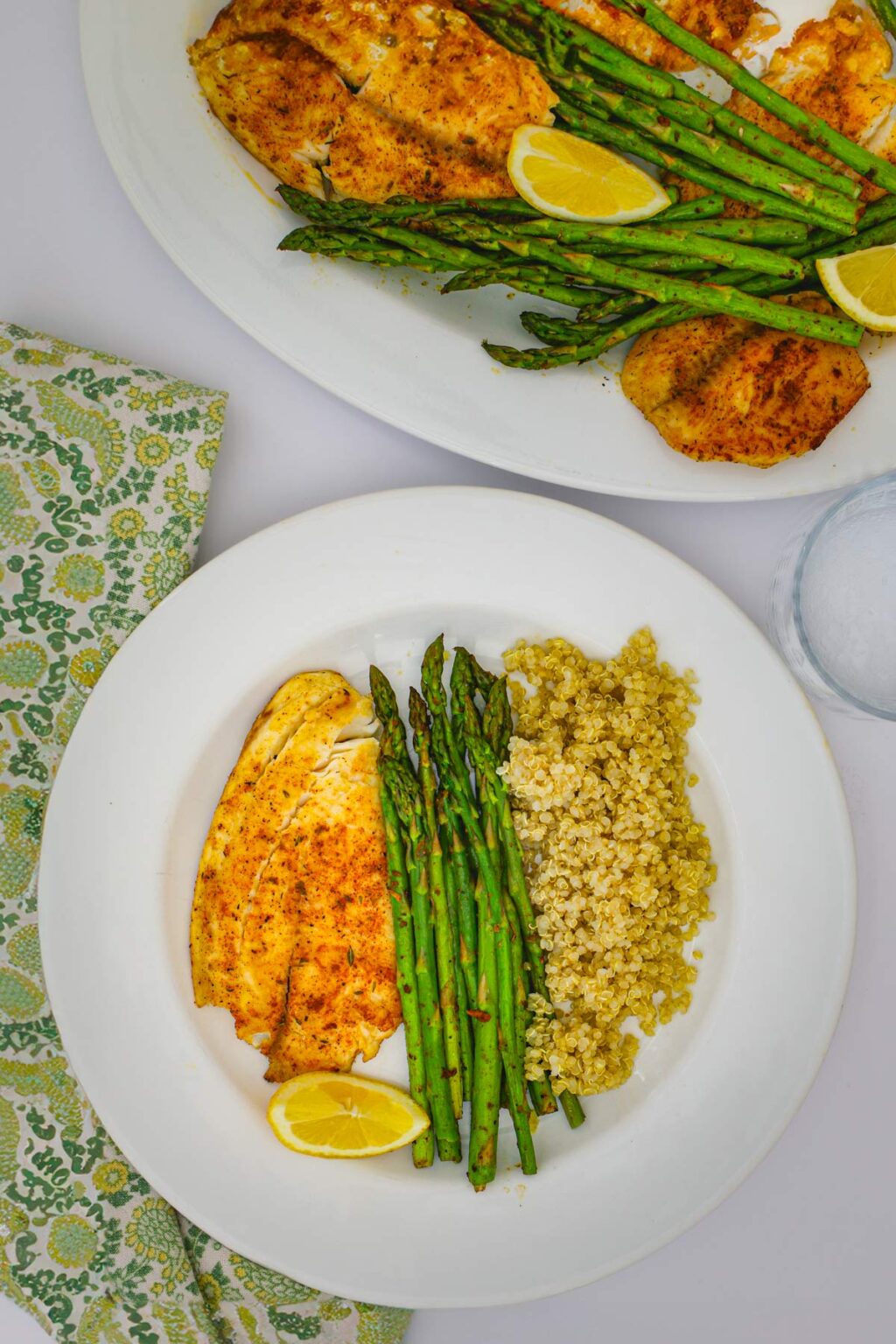
A Taste of the Land: Traditional Native American Roasted Fish with Asparagus
The aroma of woodsmoke mingling with the fresh, earthy scent of herbs and the subtle sweetness of fish – this is the essence of traditional Native American cuisine. For millennia, indigenous peoples across North America developed profound connections with their environments, mastering the art of sourcing and preparing sustenance that was both nourishing and deeply symbolic. Among their many culinary treasures, roasted fish, often accompanied by foraged vegetables, holds a special place. This article will explore the historical and cultural significance of traditional Native American roasted fish, focusing on its preparation and its harmonious pairing with asparagus, a vegetable that has been cultivated and utilized by various tribes for centuries.
A Deep-Rooted Connection to the Water
Fish has always been a vital food source for Native American communities, particularly those living near rivers, lakes, and coastlines. The abundance and nutritional value of aquatic life provided a reliable and sustainable protein source, crucial for survival and well-being. The methods of fishing varied widely, from intricate nets and traps to spears and even hand-catching, reflecting the ingenuity and deep understanding of animal behavior and aquatic ecosystems.

Once caught, the preparation of fish was an art form, passed down through generations. Roasting, in particular, was a favored method. The simplicity of the technique allowed the natural flavors of the fish to shine through, enhanced by the smoky essence imparted by open fires. This wasn’t just about cooking; it was a ritual. The act of preparing and sharing food was often interwoven with ceremonies, storytelling, and expressions of gratitude to the Creator for the bounty of the land and water.
The Art of Open-Fire Roasting
The foundation of traditional roasted fish was the open fire. Utilizing natural materials like hardwood coals or slow-burning logs, indigenous cooks created a consistent heat source. The fish, often whole and cleaned, would be prepared in various ways. Some would be wrapped in damp leaves, such as corn husks or large, broad leaves, to protect the delicate flesh from direct flames and to infuse it with subtle earthy flavors. Others might be skewered on sharpened sticks and held over the embers, rotating them to ensure even cooking.
Seasoning was often minimalist, relying on readily available ingredients from the surrounding environment. Wild herbs like sage, thyme, and wild onion were frequently used, their pungent aromas complementing the richness of the fish. A simple rub of salt, if available, or even just the natural oils of the fish itself, were often enough to create a delicious meal. The slow, even cooking over indirect heat allowed the fish to become tender and flaky, its natural moisture retained within.
Asparagus: A Wild Gift of Spring
Asparagus, with its vibrant green spears and distinct flavor, has a long history of use among Native American tribes. While specific cultivation practices varied, many communities foraged for wild asparagus, recognizing its nutritional benefits and its arrival as a herald of spring. Its crisp texture and slightly bitter, earthy taste made it a natural accompaniment to the richness of roasted fish.
Different tribes might have prepared asparagus in various ways. It could be steamed over hot rocks, boiled in simple earthenware pots, or even roasted alongside the fish, absorbing some of the smoky flavors. The preparation would often be as straightforward as the fish, focusing on preserving its fresh, vibrant qualities.
Regional Variations and Cultural Significance

It’s crucial to acknowledge that "traditional Native American" is a vast and diverse umbrella term. The specific fish used, the herbs employed, and the cooking methods would have varied significantly depending on the tribe, their geographical location, and the available resources.
For example, coastal tribes might have focused on salmon, halibut, or cod, while those inland would have relied on trout, bass, or pike. The Plains tribes, with their nomadic lifestyles, might have developed different techniques for preserving and cooking fish. Similarly, the "asparagus" of different regions might have included various edible shoots and greens that shared similar culinary characteristics.
Beyond sustenance, the act of preparing and sharing roasted fish with vegetables was deeply embedded in social and cultural practices. It was a way to connect with the land, to honor the animal that provided nourishment, and to strengthen community bonds through shared meals. Many dishes were imbued with spiritual significance, representing gratitude, abundance, and the cyclical nature of life.
A Modern Echo of Ancient Flavors
Today, the principles of traditional Native American roasted fish with asparagus continue to inspire culinary enthusiasts and chefs alike. The emphasis on fresh, seasonal ingredients, simple preparation methods, and respect for the natural flavors of food resonates with contemporary food movements. Recreating these dishes offers a tangible connection to a rich cultural heritage and a deeper appreciation for the wisdom of indigenous ancestors.
While access to open fire cooking might be limited for many, modern adaptations can still capture the essence of this traditional meal. Grilling, baking, or pan-searing can all yield delicious results, and the use of fresh herbs and seasonal vegetables remains paramount. The spirit of the dish lies in its simplicity, its connection to nature, and the mindful preparation of wholesome ingredients.
In essence, traditional Native American roasted fish with asparagus is more than just a meal; it’s a culinary narrative, a testament to the enduring relationship between people and their environment, and a delicious invitation to savor the flavors of the land.
Recipe: Traditional Native American Inspired Roasted Fish with Asparagus
This recipe is an interpretation inspired by traditional methods. It aims to capture the spirit of simple, flavorful preparation using readily available ingredients.
Yields: 2-4 servings
Prep time: 15 minutes
Cook time: 20-30 minutes
Ingredients:
-
For the Fish:
- 2-4 whole fish, cleaned (e.g., trout, bass, salmon fillets, or even a larger white fish like cod or halibut cut into portions). Approximately 6-8 ounces per person.
- 1-2 tablespoons olive oil or rendered animal fat (traditional)
- 1 teaspoon sea salt (or to taste)
- ½ teaspoon freshly ground black pepper (optional, as pepper wasn’t always readily available historically)
- 1-2 sprigs fresh sage
- 1-2 sprigs fresh thyme
- 1-2 sprigs fresh rosemary (optional, depending on regional availability)
- Lemon wedges for serving (optional, for a brighter finish)
-
For the Asparagus:
- 1 bunch fresh asparagus, trimmed (tough woody ends snapped off)
- 1 tablespoon olive oil or rendered animal fat
- Pinch of sea salt
- Pinch of freshly ground black pepper (optional)
Equipment:
- Baking sheet or grill
- Aluminum foil (optional, for wrapping)
- Tongs
Instructions:
1. Prepare the Fish:
- If using whole fish, rinse them thoroughly inside and out and pat them dry with paper towels. Make a few shallow diagonal slits on each side of the fish. This helps with even cooking and allows flavors to penetrate.
- If using fillets, ensure they are skin-on for better flavor and moisture retention. Pat them dry.
- Rub the fish all over with olive oil or rendered fat.
- Season generously with sea salt and black pepper (if using).
- Place the sprigs of sage, thyme, and rosemary inside the cavity of whole fish or on top of fillets.
2. Prepare the Asparagus:
- In a medium bowl, toss the trimmed asparagus with olive oil or rendered fat, a pinch of salt, and pepper (if using). Ensure the spears are lightly coated.
3. Roasting the Fish and Asparagus:
* **Oven Method (Recommended for ease and consistency):**
* Preheat your oven to 400°F (200°C).
* **Option 1 (Simple Roast):** Place the prepared fish directly on a baking sheet. Arrange the seasoned asparagus spears around the fish on the same baking sheet.
* **Option 2 (Wrapped for Moisture):** For extra tender and moist fish, you can wrap each whole fish loosely in parchment paper or a few layers of aluminum foil, along with a sprig or two of herbs. Place the asparagus on the baking sheet alongside the wrapped fish.
* Roast for 15-25 minutes, depending on the thickness of the fish. Whole fish will typically take longer than fillets. The fish is done when it flakes easily with a fork and the asparagus is tender-crisp.
* If using the wrapped method, carefully unwrap the fish before serving.
* **Grill Method (Closer to traditional open-fire):**
* Preheat your grill to medium-high heat.
* Clean and lightly oil the grill grates.
* Place the prepared fish directly on the grill. If using whole fish, you might consider using a fish basket or skewers to prevent it from falling apart.
* Place the seasoned asparagus directly on the grill grates, or in a grill basket.
* Grill for 4-7 minutes per side for fish, depending on thickness, and 5-8 minutes for asparagus, turning occasionally, until cooked through and slightly charred.4. Serving:
- Carefully transfer the roasted fish and asparagus to serving plates.
- Discard the herb sprigs.
- Serve immediately with lemon wedges on the side, if desired.
Traditional Touches & Variations:
- Foraged Greens: If you have access to other edible wild greens like dandelion greens or lamb’s quarters, you can blanch and sauté them with garlic (if available) as an additional side.
- Corn Husks: Historically, fish might have been wrapped in soaked corn husks before roasting. This imparts a subtle sweetness and moisture. If you have access to dried corn husks, soak them in hot water until pliable, then use them to wrap your fish.
- Wild Rice: Serve with a side of traditional wild rice, a staple grain for many Native American tribes, for a more complete meal.
- Simple Sauce: A very traditional "sauce" might have been as simple as a bit of rendered fat mixed with mashed berries or herbs.
Enjoy this taste of history and nature!


